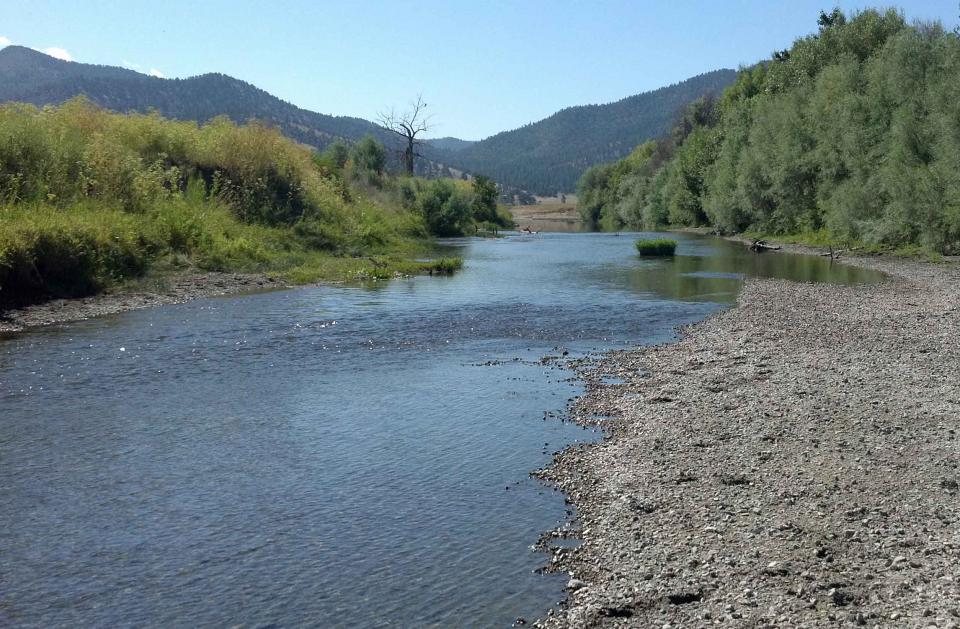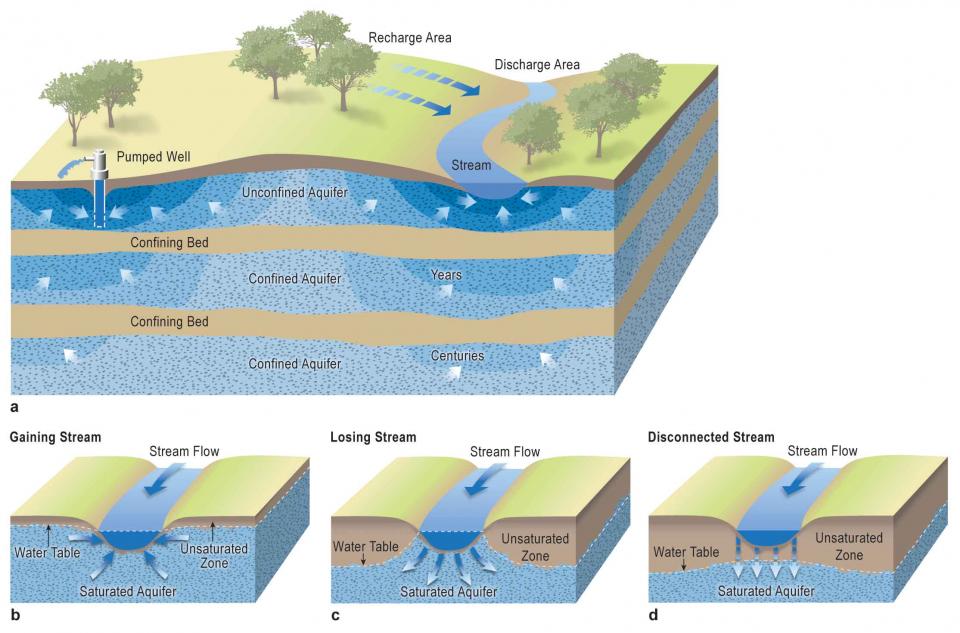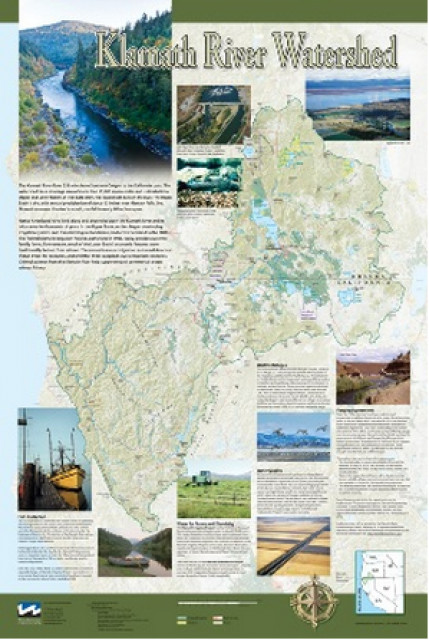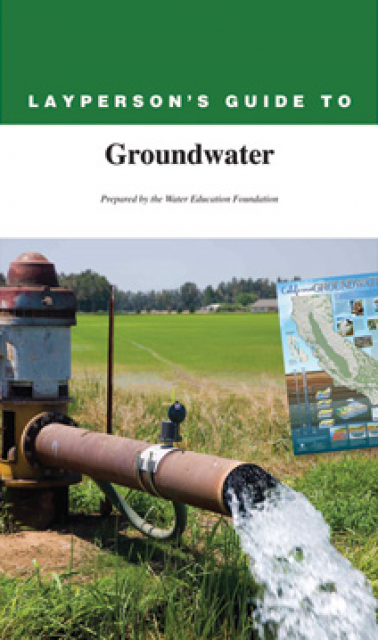California Leans Heavily on its Groundwater, But Will a Court Decision Tip the Scales Against More Pumping?
WESTERN WATER NOTEBOOK: Pumping near the Scott River in Siskiyou County sparks appellate court ruling extending public trust doctrine to groundwater connected to rivers
 In 1983, a landmark California Supreme Court ruling extended the public trust doctrine to tributary creeks that feed Mono Lake, which is a navigable water body even though the creeks themselves were not. The ruling marked a dramatic shift in water law and forced Los Angeles to cut back its take of water from those creeks in the Eastern Sierra to preserve the lake.
In 1983, a landmark California Supreme Court ruling extended the public trust doctrine to tributary creeks that feed Mono Lake, which is a navigable water body even though the creeks themselves were not. The ruling marked a dramatic shift in water law and forced Los Angeles to cut back its take of water from those creeks in the Eastern Sierra to preserve the lake.
Now, a state appellate court has for the first time extended that same public trust doctrine to groundwater that feeds a navigable river, in this case the Scott River flowing through a picturesque valley of farms and alfalfa in Siskiyou County in the northern reaches of California.
Yet in an era when local agencies around the state already are drafting plans to protect groundwater basins from being over pumped, the impact of this appellate ruling depends on who you ask.
In the Scott River case, Environmental Law Foundation v. State Water Resources Control Board, California’s Third District Court of Appeal concluded that counties are obligated to consider the public trust before authorizing new groundwater wells whose extractions might have an adverse impact on trust resources, such as water in a navigable river. Siskiyou County, which was a defendant in the case, has filed a petition for review with the California Supreme Court.
Still, Environmental Law Foundation President James Wheaton sees the ruling as a harbinger, even if its reach is limited to groundwater connected to surface waters and not deep aquifers.
“This opinion, to paraphrase the court, is the public trust case for the 21st century — a monumental decision bringing public trust principles to today’s water issues,” he said. “California’s water future is underground. That is where the real fight is and will continue to be. And this decision brings one of the most powerful legal rules — the public trust doctrine — to that fight.”
Chris Scheuring, senior counsel with the California Farm Bureau Federation, believes the impact is likely to be more limited. The Farm Bureau filed a friend of the court brief in support of Siskiyou County.
Scheuring does not believe the ruling puts everyone on the cusp of a sea change in groundwater management, adding that the emphasis remains on the state’s Sustainable Groundwater Management Act (SGMA), the 2014 law aimed at putting the state’s hardest-hit aquifers on a path toward sustainability.
“To bring the public trust to bear all around the state requires either a bunch of lawsuits or having administrative agencies or the State Water Board step in … and that is unwieldy, inefficient and probably overcome by the SGMA process anyway,” Scheuring said.
Some legal experts agree that the public trust doctrine is just part of the story.
 Jennifer Harder, a professor specializing in water law at McGeorge School of Law in Sacramento, said she was not sure the outcome would be different if other laws are properly applied.
Jennifer Harder, a professor specializing in water law at McGeorge School of Law in Sacramento, said she was not sure the outcome would be different if other laws are properly applied.
“A properly done SGMA analysis and a properly done reasonable use analysis must assess long-term environmental sustainability,” she said, “Reasonable use and the public interest require consideration of impacts to common public resources, or the analysis is flawed.”
Historic Mono Lake decision
Known to most people as the basis for the historic 1983 Mono Lake decision that limited Los Angeles’ water diversions, the public trust doctrine requires the State Water Resources Control Board (State Water Board) to consider the potential for water diversions to affect the public value of navigable waters and to protect that value where feasible, even if the diversions are from non-navigable tributaries. The feasibility standard requires the State Water Board and courts to balance environmental harm with economic and other considerations.
With origins tracing to Roman law, the public trust doctrine centers on the principle that natural resources such as water are preserved for public use, and that the government owns and must protect and maintain these resources for the public’s use. In a seminal article published in 1970, the celebrated University of California, Berkeley law professor Joe Sax wrote that “Of all the concepts known to American law, only the public trust doctrine seems to have the breadth and substantive content which might make it useful as a tool of general application for citizens seeking to develop a comprehensive legal approach to resource management problems.”
The doctrine gained notoriety in the 1983 landmark National Audubon Society v. Superior Court decision in which the California Supreme Court held that the public trust doctrine applied to the city of Los Angeles’ rights to divert water from several streams flowing into Mono Lake. The decision stated that, “whenever feasible,” state agencies and courts were obliged to consider and protect public trust resources when allocating water.
Linking groundwater and surface water
Scientists have long understood that surface water and groundwater are connected — that water seeps into groundwater from streams, and that groundwater can contribute to streams and wetlands. Thus, the argument has been made that the connection between groundwater and surface water needs to be solidified as decisions about water use in California are made.
 The Scott River is a major tributary to the lower Klamath River that is home to steelhead trout, Chinook salmon and the threatened coho salmon. The river flows through Scott Valley, where groundwater pumping for agricultural irrigation has reduced the amount of cooler groundwater contributing to the Scott River’s baseflow, according to a March 2018 report by the University of California, Berkeley’s Wheeler Water Institute.
The Scott River is a major tributary to the lower Klamath River that is home to steelhead trout, Chinook salmon and the threatened coho salmon. The river flows through Scott Valley, where groundwater pumping for agricultural irrigation has reduced the amount of cooler groundwater contributing to the Scott River’s baseflow, according to a March 2018 report by the University of California, Berkeley’s Wheeler Water Institute.
“This has reduced late summer and fall streamflow and raised surface water temperatures, which in turn has affected fish habitat,” said the report, Navigating Groundwater-Surface Water Interactions under the Sustainable Groundwater Management Act.
In 2010, Environmental Law Foundation (ELF) and others filed suit against the State Water Board and Siskiyou County, alleging that permitted wells near the Scott River were partly responsible for decreased surface flows, which in turn harmed fish populations and made the river less suitable for boating and other recreational activities. Environmental Law Foundation is an Oakland-based environmental and social justice law organization.
University of California, Davis law professor Richard Frank, who served as co-counsel for ELF in the case, noted that local farmers and ranchers in recent years have drilled numerous groundwater wells and pumped ever-increasing amounts of groundwater from those aquifers.
“As a direct result, the surface flows of the Scott River have been reduced, at times dramatically,” he wrote Aug. 29 in Legal-Planet.org. “Indeed, in the summer and early fall months, the Scott River has in some years been completely dewatered due to the nearby groundwater pumping. The adverse effects on both the Scott River’s salmon fishery and recreational use of the river have been devastating.”
“This opinion, to paraphrase the court, is the public trust case for the 21st century — a monumental decision bringing public trust principles to today’s water issues.”
~ Environmental Law Foundation President James Wheaton
ELF and the Pacific Coast Federation of Fishermen’s Associations initially petitioned the State Water Board to administratively limit groundwater pumping in the Scott River watershed, but the board declined, leading to the lawsuit.
The ruling from the trial court in Sacramento held that while groundwater itself is not protected by the public trust doctrine, the doctrine nevertheless “protects navigable waters from harm caused by extraction of groundwater, where the groundwater is so connected to the navigable water that its extraction adversely affects public trust uses.”
Citing the California Supreme Court’s decision in National Audubon, the trial court said the doctrine extends to diversions from non-navigable streams because those diversions result in adverse effects on the public trust values of navigable waters. In the case of National Audubon, that turned on “scenic beauty” and “ecological values” of Mono Lake.
The trial court also held that because the administration of the public trust primarily rests with the state, the county, as a subdivision of the state, “shares responsibility for administering the public trust.”
How the public trust and SGMA intersect
The county appealed to the Third District Court of Appeal in Sacramento. Of particular importance in the appellate court’s discussion was the intersection between the public trust doctrine and SGMA.
The three-judge panel rejected Siskiyou County’s claim that SGMA supersedes a county’s obligation to consider the public trust, noting in their ruling that “We can evince no legislative intent to eviscerate the public trust in navigable waters in the text or scope of SGMA.”
“We conclude the enactment of SGMA does not … occupy the field, replace or fulfill public trust duties, or scuttle decades of decisions upholding, defending, and expanding the public trust doctrine.”
“As a practical matter, we know that the public trust doctrine applies and that it’s not supplanted or superseded by SGMA.”
~Chris Scheuring, attorney with California Farm Bureau Federation
Harder with McGeorge School of Law praised the appellate court’s ruling, calling it “well written and well-reasoned.”
“The outcome on the question of applicability of the public trust to interconnected surface water and groundwater was pretty straightforward,” she said. “It’s a natural application of National Audubon, which itself addressed application of the public trust to non-navigable waters that flow into navigable waters.”
The ruling raises questions about the data, information and the resources needed on the part of local agencies to assess impacts to surface water resources, Harder said.
“All of those complexities existed prior to this decision and this decision underscores the need to address those concerns,” she said. “The local agencies that are implementing SGMA have limited resources and that reality needs to be addressed so that we can make good decisions about environmental impacts, including those to surface water.”
A ‘narrow’ or ‘far-reaching’ ruling?
Scheuring, the Farm Bureau attorney, said the ruling “is not good from our perspective … but [is] a very narrow ruling.”
![Chris Scheuring, an attorney with the California Farm Bureau Federation, said he believes the appellate court ruling “is not good from our perspective … but [is] a very narrow ruling.” Chris Scheuring, an attorney with the California Farm Bureau Federation.](/sites/main/files/imagecache/medium/main-images/chris_scheuring-web.jpg?1637047272) “As a practical matter, we know that the public trust doctrine applies and that it’s not supplanted or superseded by SGMA, but whether [it] is going to be deployed by the court in this case or by any administrative agencies … in advance of SGMA’s implementation is questionable,” he said. “SGMA has a broader ambit than the public trust does, so my sense is that my members are still looking toward SGMA as the framework that’s going to govern groundwater extractions in the future and not the public trust doctrine.”
“As a practical matter, we know that the public trust doctrine applies and that it’s not supplanted or superseded by SGMA, but whether [it] is going to be deployed by the court in this case or by any administrative agencies … in advance of SGMA’s implementation is questionable,” he said. “SGMA has a broader ambit than the public trust does, so my sense is that my members are still looking toward SGMA as the framework that’s going to govern groundwater extractions in the future and not the public trust doctrine.”
David Orth, a Fresno water resources consultant and former member of the California Water Commission, said there won’t be a “broad-brush impact” from the ruling on groundwater pumping in the San Joaquin Valley, where many aquifers are isolated from surface water by geography or heavy use.
“It’s generally accepted that there’s not a broad interconnection in surface-groundwater that creates the same condition in most of the San Joaquin Valley as it does in places like the Cosumnes River [near Sacramento] or on the Scott River,” he said. “Nonetheless, the groundwater sustainability agencies in the San Joaquin Valley will need to consider the application of public trust issues as groundwater sustainability plans are prepared and implemented.”
Other opponents of the ruling believe the decision could have far-reaching implications.
Downey Brand, a Sacramento law firm that filed a friend of the court brief on behalf of Siskiyou County and has been retained to pursue the county’s petition for state Supreme Court review, said in a Sept. 7 legal alert that the ruling “marks a significant extension” of the public trust doctrine “and has opened the door to a new frontier for litigation over groundwater administration in California.”
The opinion “strays into a number of issues well beyond the core questions in the case, including how … SGMA interrelates with the public trust,” Downey Brand said. “While the opinion professes to be ‘extraordinarily narrow,’ that contention belies the opinion’s broad implications.”
“The environment is best protected if agencies build trust considerations into decisions instead of wasting public resources in endless legal challenges.”
~Jennifer Harder, professor at McGeorge School of Law
What happens next to the wells near the Scott River is unclear. Whether pumping will change depends on whether there are future proceedings in court or at the State Water Board, and what the outcome is.
“This is a legal ruling, it’s not the end of the line,” Scheuring said. “Is it going to change the way that one or more folks are pumping water in the Scott River? I don’t know. That remains to be seen. This ruling it not, ‘everybody stop pumping’ or anything like that.”
Harder acknowledged the ruling’s potential effects on the legal landscape.
“Does this decision provide options to potential challengers [elsewhere]? Certainly,” she said. “A public trust suit is relatively easy to bring and resonates with the public and courts.”
Harder said it behooves local agencies to be thorough in their responsibilities for their own benefit.
“There is a sense on the part of local agencies that invocation of the public trust doctrine is a death knell,” she said. “I would encourage local agencies to think differently and embrace the public trust analysis because doing it allows them to consider environmental impacts and the economic the feasibility of addressing them.
“Agencies should care about long-term sustainability, and they have the facts,” Harder said. “And the environment is best protected if agencies build trust considerations into decisions instead of wasting public resources in endless legal challenges.”
Further reading and resources from the Water Education Foundation
Aquapedia: Public Trust Doctrine
Aquapedia: Mono Lake
Western Water: Now Comes the Hard Part: Building Sustainable Groundwater Management in California Summer 2017
Western Water: Preservation and Restoration: Salmon in Northern California Winter 2017
Western Water: Novel Effort to Aid Groundwater on California’s Central Coast Could Help Other Depleted Basins May 2018
Western Water: Does California’s Environment Deserve its Own Water Right? February 2018
The 2014 Sustainable Groundwater Management Act: A Handbook to Understanding and Implementing the Law October 2015
Know someone else who wants to stay connected with water in the West? Encourage them to sign up for Western Water, and follow us on Facebook and Twitter.










